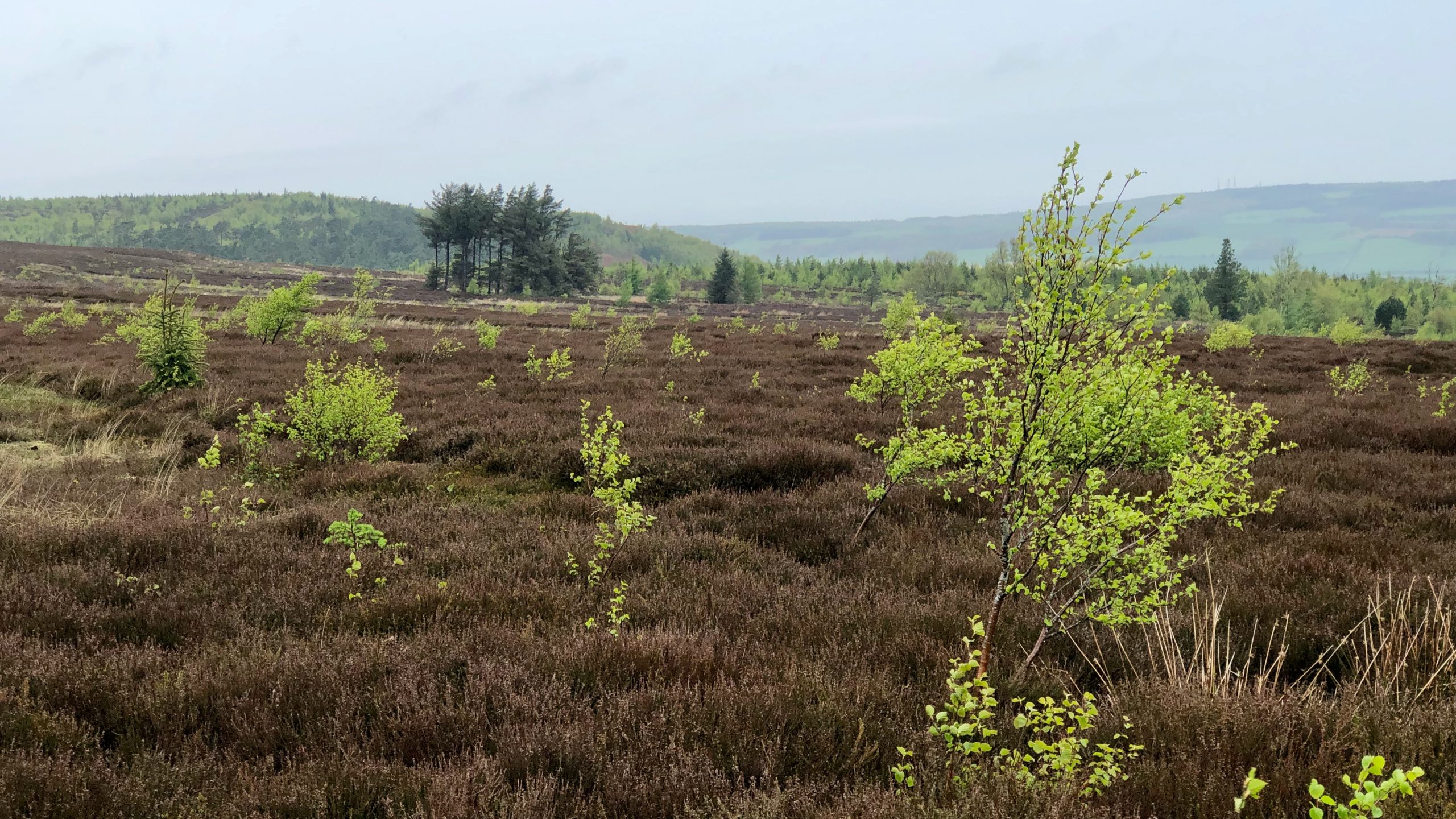On a dreich morning such as this, I do find the heather moorland to be a rather lacklustre hue of brown, struggling to emerge from its wintry dormancy. But amidst this dullness, here on Hutton Moor, scores of self-seeded birch saplings bursting with fresh green leaves bring colour and vibrancy to the otherwise subdued landscape.
The birch tree is a true pioneer species, making its way onto open spaces with its tiny, wind-blown seeds. So beginning the process of succession, slowly but surely transforming the moorland into a lush woodland, as long as marauding sheep, and humans with their activities like cutting or swidden burning, don’t interfere. In my opinion, that wouldn’t be a bad thing.
Birches aren’t exactly known for their longevity. A birch is said to be ancient at 150 years old compared with 800 or more for a Yew1‘Ancient Trees: A Guide’. 2023. National Trust <https://www.nationaltrust.org.uk/discover/nature/trees-plants/ancient-and-notable-trees> [accessed 8 May 2023]. They begin to decline at around 80 years old. Plus, they’re a bit high-maintenance, as they need quite a lot of light to thrive. As a result, slower-growing species like Oaks will eventually outgrow the Birches, which will be overshadowed2‘Ash, Birch and Alder/Willow Woodlands’. 2023. Countrysideinfo.co.uk <http://www.countrysideinfo.co.uk/woodland_manage/broadlf2.htm> [accessed 8 May 2023].
As the years go by, whole swathes of Birch will slowly give way to Oak woodland. It’s a natural progression, and it’s been their lot since they first became established in Britain after the last glacier retreated.
Did you know that there are two types of Birch trees that are native to Britain? The first is the Silver Birch, also known by its Latin name Betula pendula, and the second is the Downy Birch, Betula pubescens. These two species have quite different preferences when it comes to soil and climate. The Silver Birch thrives in sandy or gravely soils, while the Downy Birch prefers wetter soils and a cooler climate, but they’ll often be found close together.
It’s said that Birch trees can support over 300 different species of insects and mites, these attracting bird life such as Willow warblers and chaffinches. The Fly Agaric is just one of the many species of fungi that are found in Birch woodland.
It’s an age-old belief that Birch has the power to ward off evil, and it’s a belief that has persisted through the ages. Back in the days of yore, naughty schoolchildren quaked in their boots at the mere thought of a birch switch, while in more recent times, ceremonies of ‘beating the bounds‘ have seen the tapping of local boundaries with staffs made from birch or willow. Birch cradles were said to protect newborn babes from malicious spirits, and in the wild and woolly folklore of the Highlands, it was thought that a pregnant cow herded with a birch stick would bear a healthy calf. Or if that same cow was barren, she’d become fertile, all thanks to the mighty power of the birch3‘Tree Folklore: Birch, the Lady of the Wood – #FolkloreThursday’. 2016. Folklorethursday.com <https://folklorethursday.com/myths/birch-lady-wood/> [accessed 8 May 2023].
Less spiritually, Birch has long been used to fashion all sorts of objects, from charming little toys to sturdy tools, from bobbins to handles. Birch bark’s natural water resistance made it the perfect material for canoes. And this property also enabled its use as a water-resistant substitute for paper, a technique that has been employed since ancient times. Birch tar, with its distinctive smoky aroma, has played a vital role in tanning leather and binding books. And in the realm of herbal medicine, an infusion of Birch leaves was once used as a powerful antiseptic, perfect for keeping all manner of ailments at bay.
Birch is a remarkable tree, with a long legacy in our history.
- 1‘Ancient Trees: A Guide’. 2023. National Trust <https://www.nationaltrust.org.uk/discover/nature/trees-plants/ancient-and-notable-trees> [accessed 8 May 2023]
- 2‘Ash, Birch and Alder/Willow Woodlands’. 2023. Countrysideinfo.co.uk <http://www.countrysideinfo.co.uk/woodland_manage/broadlf2.htm> [accessed 8 May 2023]
- 3‘Tree Folklore: Birch, the Lady of the Wood – #FolkloreThursday’. 2016. Folklorethursday.com <https://folklorethursday.com/myths/birch-lady-wood/> [accessed 8 May 2023]

Leave a Reply